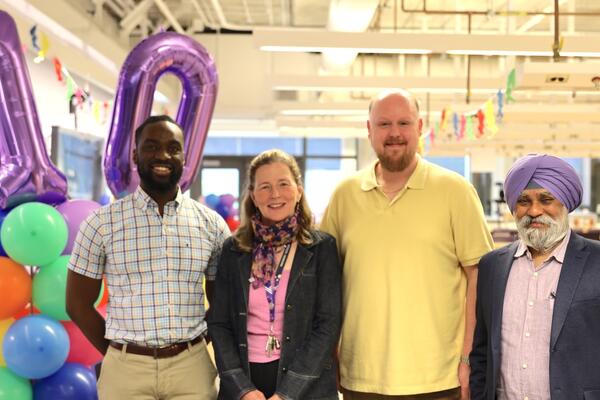
Waterloo alumni worked on ventilators ordered for COVID-19 front line
Four engineering grads were on Thornhill Medical team that designed and developed a portable life support and ventilator device now being produced for the coronavirus fight

Four engineering grads were on Thornhill Medical team that designed and developed a portable life support and ventilator device now being produced for the coronavirus fight
By Brian Caldwell Faculty of EngineeringMichael Vermeer was listening to Prime Minister Justin Trudeau make an announcement on the radio about COVID-19 initiatives last month when one of them caught his ear.
It was about a deal the Canadian government had reached with a Toronto company called Thornhill Medical to supply hundreds of portable life support and ventilator units for the front-line fight against the coronavirus.

Michael Vermeer helped develop a portable ICU unit now under order for use in the coronavirus pandemic.
Vermeer, a member of the first mechatronics engineering class at the University of Waterloo, quickly realized he was talking about technology he had played a significant role developing while working at the company for eight years.
“That was certainly a proud moment,” he said of Trudeau’s radio announcement. “It was great to know all the hard work that went into that device was getting its time to shine helping Canadians.”
Among those who also had a hand in designing and developing the compact MOVES SLC unit were fellow Waterloo Engineering alumni Drew Miller (BASc ’96), Martin Rozee (BASc ’02) and Zhan Huan Zhou (BASc ’01).
Vermeer (BASc ’08) first joined Thornhill as a co-op student and worked on two iterations of the device, initially produced for field use by the United States military, before leaving the company in 2016.
“It’s basically a sub-50-pound, self-contained, battery-powered, intensive care unit,” he said. “It was a unique product to work on and I would feel confident putting my own family members on it.
“We got to see several military bases and use various military testing facilities. The design side of it was always fun and rewarding.”
Vermeer now does software electrical design consulting work for other medical device companies, often with the fellow engineering alumni he met and worked with at the company.
“We all left Thornhill at various times, but we still come together to varying degrees on different projects,” he said.

Read more
Here are the people and events behind some of this year’s most compelling Waterloo stories

Read more
The Pearl Sullivan Engineering IDEAs Clinic marks a decade of delivering experiential learning embedded in the real world and mentored by industry professionals

Read more
Waterloo Engineering alum wears her iron ring proudly while building her career in quantum tech in Germany
The University of Waterloo acknowledges that much of our work takes place on the traditional territory of the Neutral, Anishinaabeg, and Haudenosaunee peoples. Our main campus is situated on the Haldimand Tract, the land granted to the Six Nations that includes six miles on each side of the Grand River. Our active work toward reconciliation takes place across our campuses through research, learning, teaching, and community building, and is co-ordinated within the Office of Indigenous Relations.